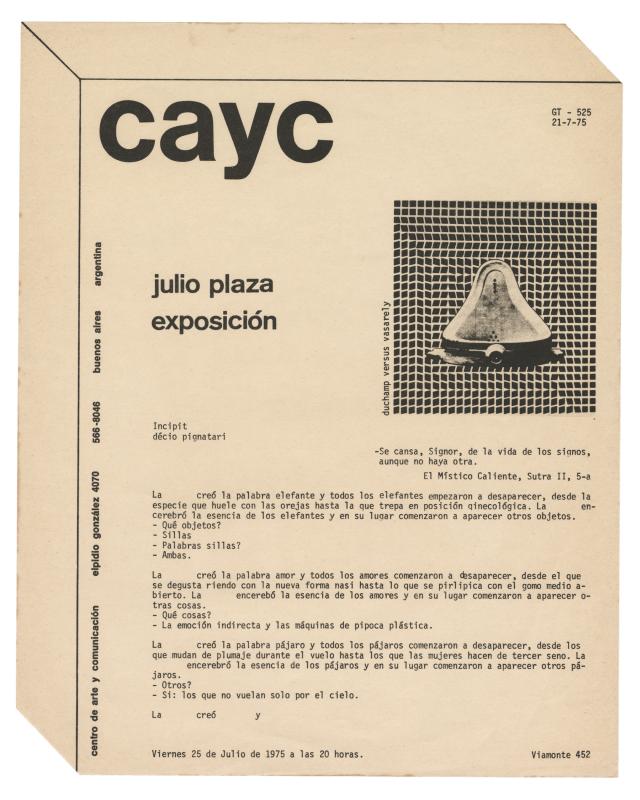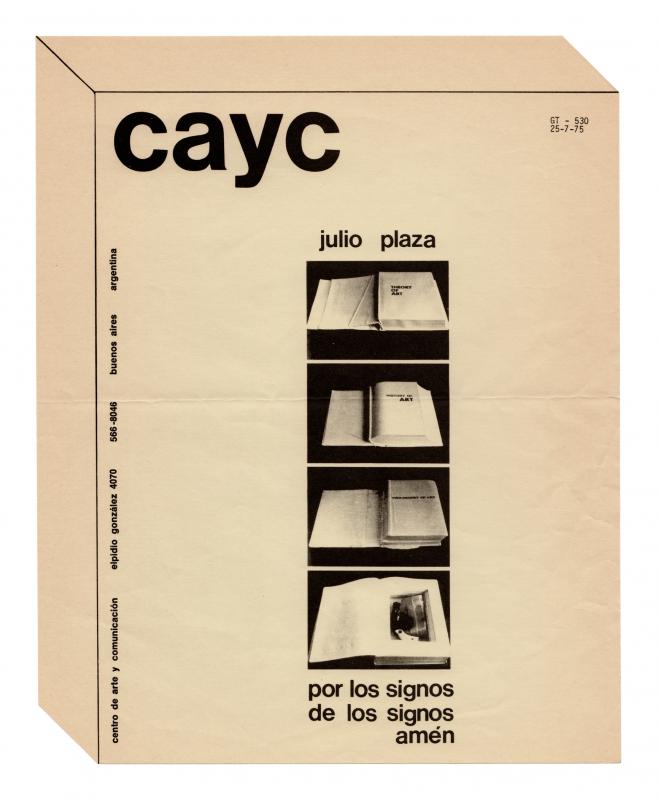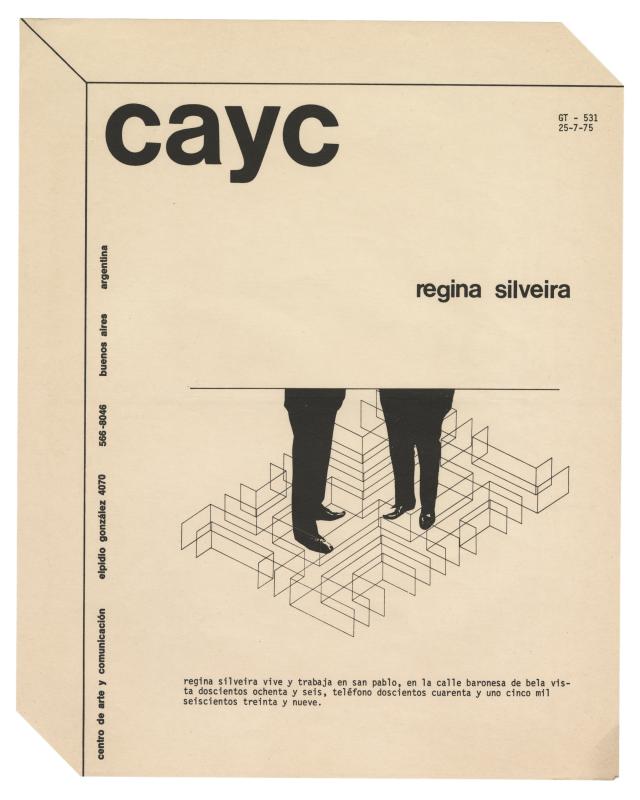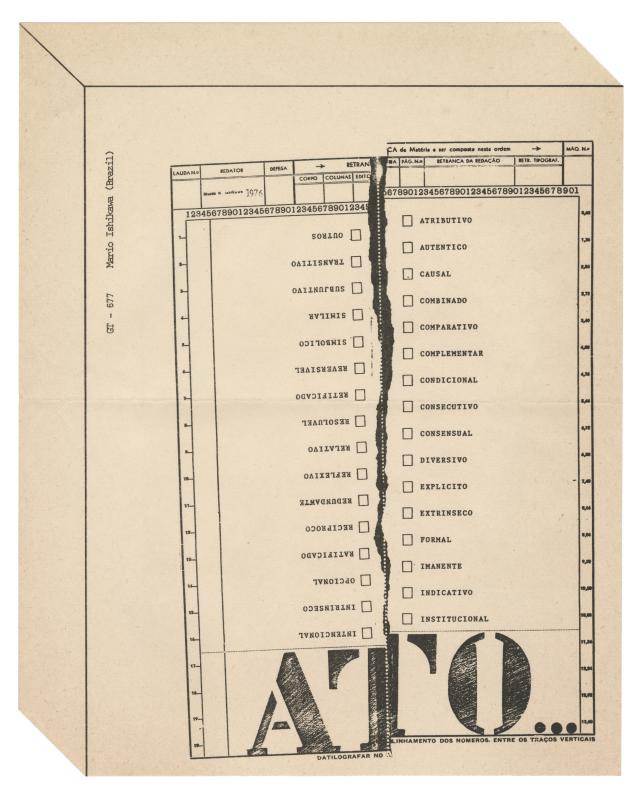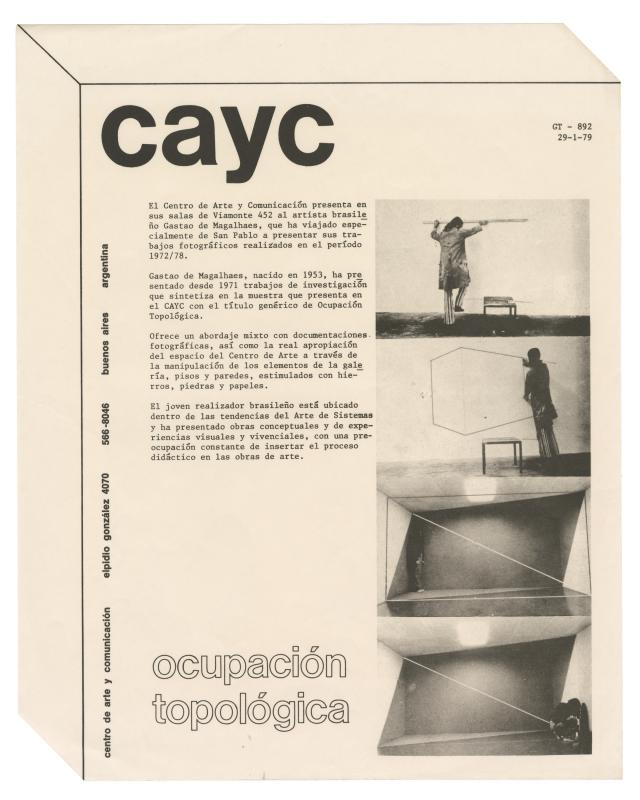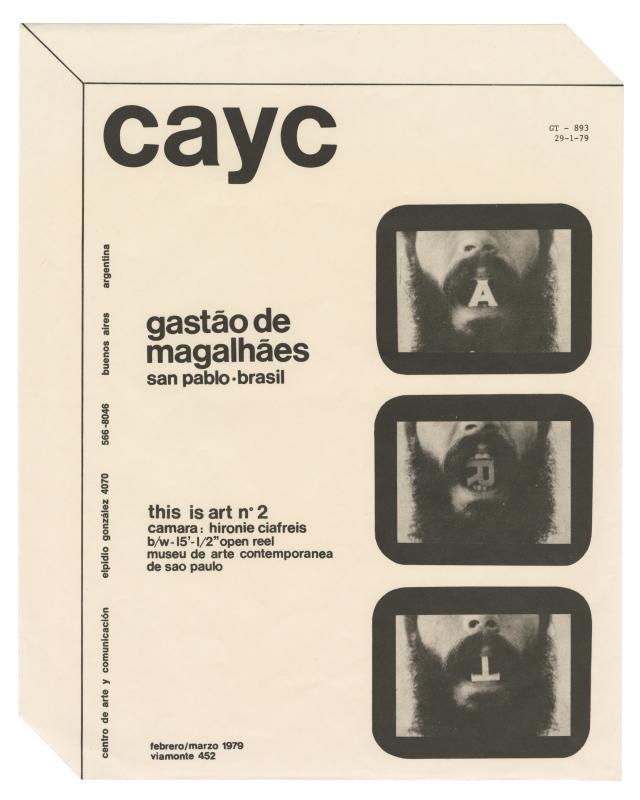Ever since it was founded, the CAYC (Centro de Arte y Comunicación), helmed by the cultural promoter, artist, and businessman Jorge Glusberg, was intended as an interdisciplinary space where an experimental art movement could flourish. The establishment of collaborative networks connecting local and international artists and critics played an important role in this process. The exhibitions shone a light on these exchanges, in which overviews of trends or individual artists provided an introduction to the innovations of international contemporary art and made Argentine and Latin American artists better known on the global scene.
Together with Julio Plaza (GT-525; doc. no. 1476852, GT-530; doc. no. 1476853), Regina Silveira (GT-526; doc. no. 1476849, GT-531; doc. no. 1476854), and Mário Ishikawa (GT-677; doc. no. 1477405), among others, Gastão de Magalhães (b. 1953) is one of the Brazilian artists who was introduced to the CAYC by Walter Zanini (1925–2013), the critic, art promoter, and director of Museu de Arte Contemporânea da Universidade de São Paulo (MAC-USP) from 1963 to 1978. Glusberg and Zanini contributed to the expansion of a “transnational dialogic territory,” organizing various events such as the exchange of regional and international artists, exhibitions, and symposiums. (Luiza Mader Paladino, Caiana, 2016.)
Gastão de Magalhães was one of the first generation of artists in São Paulo affiliated with the USP to experiment with video, art actions, and documentary photography. He saw the international network available through mail art as a way to criticize the de facto military regime that ruled Brazil for twenty-one years (1964–85). His willingness to transcend limits—whether set by geography or repression—was expressed in Circulação Postal (Postal Circulation, 1975–76), the series he created, with help from Francisco Iñarra, as an imaginary exhibition of travels through postcards from São Paulo to distant destinations all over the world.
In 1979 de Magalhães had a solo show at the CAYC in Buenos Aires, which he called Ocupación topológica (GT-892; doc. no. 1478074) and GT-893 (doc. no. 1477837).

